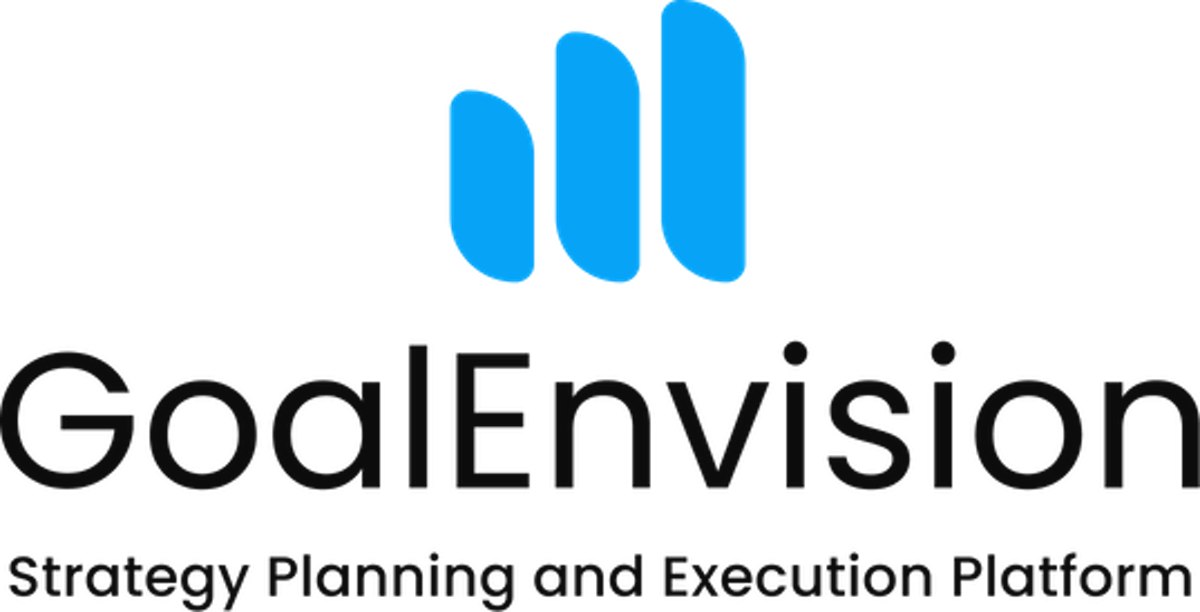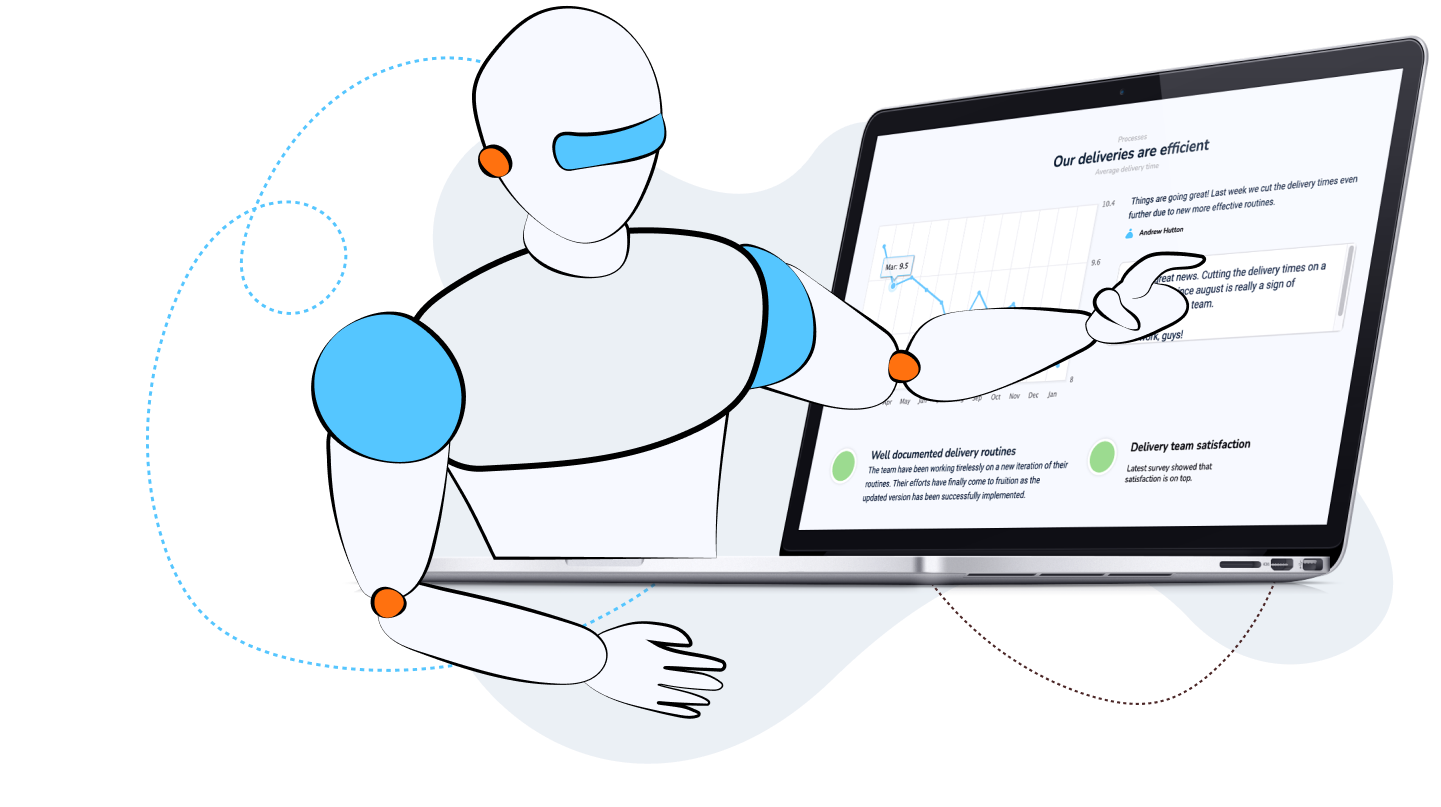Five success perspectives for performance management: A guide to sustainable success
Share this article
As a leader, have you experienced challenges in setting goals that don't quite lead to the results you hoped for? Do you recognise that many of the goals are based on solving immediate problems rather than creating long-term success? When goals are set without a clear context or without being linked to an overall vision and values, the result is often short-term and reactive.
Successful management by objectives is not only about fixing current problems but about building for the future. It is about having a forward-looking strategy that is based on the company's visions and values. By focusing on long-term goals that are firmly rooted in these fundamental principles, you can create a sustainable path to success.
Many companies miss this important link between vision and goal management, leading to a fragmented strategy where each goal is treated in isolation. Without a coherent plan, you risk losing direction and missing out on the opportunities that strong, visionary goal management can offer.
In this article, we will explore GoalEnvision's five success perspectives that will help you set goals that not only solve problems but also build a strong and sustainable future for your business. These perspectives provide a structured and holistic framework to ensure that each goal is aligned with your overall vision and company values, leading to long-term success and growth.
What does the research say?
Research shows that goals that are set in a clear context and linked to an overall vision and values have a much greater chance of success. A study published in Harvard Business Review shows that companies that implement goal-based management in line with their vision and values not only achieve their goals faster, but also outperform their competitors in terms of growth and innovation. A clear context creates a framework that helps employees understand why the goals are important, how they contribute to the overall success of the company and what concrete steps are needed to achieve them (Leadr Blog).
Furthermore, research from Stanford University that goals that are anchored in a long-term vision create a sense of purpose and commitment among employees. When employees see how their work contributes to a larger context, their motivation and job satisfaction increase, leading to higher productivity and better results (Leadr Blog).
By setting goals in a context that is clearly linked to the company's vision and values, you can not only solve current problems but also build a strong and sustainable foundation for future success. This creates a dynamic and engaging work environment where all employees pull in the same direction towards common, long-term goals.
Putting goals in the right order
GoalEnvision's five goal perspectives – market, sales, operations, employees and finance – serve as a comprehensive template for setting goals in their proper context. By using these perspectives, companies can ensure that each goal is anchored in an overall strategy that supports long-term success. These perspectives help break down goals into manageable pieces and connect them to the company's vision and values, creating a holistic view that promotes collaboration and cohesion within the organization.
A template for setting successful goals in context
To create a successful and sustainable goal management strategy, it is important to set goals that not only solve current problems but also build for the future. By using GoalEnvision's five success perspectives – market, sales, operations, employees and finance – you can ensure that each goal is well anchored in the company's overall vision and values. It is important to tackle these perspectives in order, as each step builds on the previous ones and creates a coherent strategy that promotes long-term success and growth.
At first, it is not necessary to set goals in all perspectives. Start with what you have and develop further when you get a little along the way.
1. The market perspective
The market perspective focuses on understanding and meeting customers' needs. Objectives in this area may include:
-
Market & Product Fit: Ensure that the products/services meet market demand.
-
Environmental monitoring: Collection and analysis of market data.
-
Customer satisfaction: Improve the customer experience and resolve any issues.
-
Market understanding: Develop an in-depth understanding of the market and its trends.
-
Competitiveness: Offer high quality products/services at competitive prices.
-
Product development: Improve and develop products/services.
Example: If the goal is to increase customer satisfaction, you can use market understanding to identify customer needs and develop products that better meet these needs.
2. The sales perspective
The sales perspective is about communicating and selling the company's offers. Goals can include:
-
Marketing and sales results: Increase sales through effective marketing.
-
Brand & Awareness: Create a strong brand.
-
Public media relations: Manage media relations for positive publicity.
-
Web & social media: Using digital channels for marketing.
-
Generation of leads: Identify potential customers.
-
Prospect Qualification: Evaluate potential customers.
-
Actual sales: Carry out sales.
-
Customer care: Building long-term customer relationships.
Example: To increase sales, you can build on the market understanding from the market perspective to create targeted marketing campaigns.
3. The operations perspective
The operational perspective focuses on internal processes and efficiency. Goals may include:
-
Internal efficiency: Optimize the use of resources.
-
Processoptimering: Improve work processes.
-
Supply chain management: Manage the supply chain effectively.
-
Quality control: Ensure high product quality.
-
Technology & Infrastructure: Have the necessary technology and infrastructure in place.
-
Internal communication: Improve communication within the company.
Example: To support sales targets, you can optimize internal processes to ensure fast and efficient delivery of products.
4. The people perspective
The employee perspective is about staff competence and motivation. Goals can include:
-
Personnel development: Develop employee skills.
-
Cooperation and cooperation: Promote collaboration within and outside the company.
-
Positive workplace culture: Create a pleasant working environment.
-
Recognition and rewards: Reward employee performance.
Example: To support the business's goals, you can develop employees' skills through targeted training programs.
5. The economic perspective
The financial perspective focuses on financial results. Goals may include:
-
Financial control: Monitor and control the economy.
-
Budget work: Plan and set financial goals.
-
Cash flow management: Ensure sufficient cash flow.
-
Risk management: Identify and manage financial risks.
-
Capital structure: Determine funding sources and the ratio of debt to equity.
Example: To improve profitability, you can use data from the operational perspective to identify cost savings and efficiency opportunities.
By using GoalEnvision's five perspectives in order, you can set goals that are coherent and well anchored in the company's overall strategy. Each perspective builds on the previous ones, creating a strong and cohesive plan for long-term success. The market perspective helps you understand customer needs, which informs sales strategies. The sales targets require efficient internal processes, which are optimized from the operational perspective. Efficient processes are supported by competent and motivated employees, and finally the financial perspective ensures that all these efforts lead to financial sustainability and growth.
Common questions and answers
1. Why is it important to use a structured model for goal management? Using a structured model ensures that all aspects of the company's operations are considered, leading to a more coherent and effective strategy.
2. How does the market perspective help me better understand my customers' needs? The market perspective focuses on collecting and analyzing market data, which provides insights into customer preferences and needs.
3. How can the sales perspective improve my sales? The sales perspective helps you develop targeted marketing campaigns and improve customer relationships, increasing sales volume.
4. What does the operations perspective mean for my internal processes? The business perspective focuses on optimizing internal processes and resources, which increases efficiency and reduces costs.
5. How does the people perspective affect my organization's success? By investing in employee development and motivation, you create a committed and competent workforce that drives the company forward.
These five perspectives provide a comprehensive framework for setting goals that not only solve immediate problems but also build a sustainable and successful future for your business.
Share this article
Did you like this article? Here is more...
Latest



